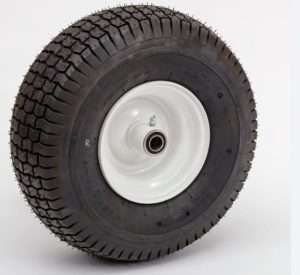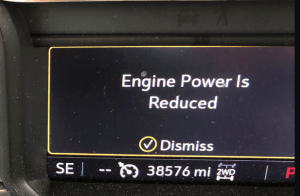285/55R20 vs 285/65R18 – A Comprehensive Comparison Guide
Are you wondering which tire size is better for your vehicle, 285/55R20 or 285/65R18? In this article, we’ll explore the differences between the two and help you make an informed decision.
Definition of tire size:
Tire size refers to the specific measurements of a tire, including its width, aspect ratio, rim diameter, and overall diameter.
These measurements are typically displayed on the sidewall of the tire, and they can vary depending on the make and model of the vehicle.
Tire size is an essential consideration for anyone looking to replace or upgrade their vehicle’s tires, as it can affect everything from performance and handling to fuel efficiency and safety.
Why tire size is important:
Tire size is important because it can have a significant impact on the overall performance and safety of a vehicle.
Choosing the right tire size is crucial for maintaining proper handling, steering, and braking, as well as ensuring that the vehicle can carry its intended load safely and efficiently.
Additionally, selecting the right tire size can help to improve fuel economy, reduce road noise, and increase the lifespan of the tires.
Purpose of the comparison guide:
The purpose of this comparison guide is to provide readers with a detailed breakdown of the differences between two popular tire sizes: 285/55R20 and 285/65R18.
By presenting information on the tire sizes’ widths, aspect ratios, rim diameters, overall diameters, revolutions per mile, and load capacities, readers can compare and contrast the two sizes and determine which one may be best suited for their vehicle.
The guide will also provide information on the pros and cons of each tire size, their performance, cost, and upgrading options, providing readers with a comprehensive resource for making an informed decision about their tire size.
Explanation of the two tire sizes:
The two tire sizes being compared in this guide are 285/55R20 and 285/65R18. These numbers refer to the width, aspect ratio, and rim diameter of the tire.
The first number, 285, represents the width of the tire in millimeters.
The second number, either 55 or 65, represents the aspect ratio, which is the height of the sidewall as a percentage of the width.
The third number represents the diameter of the wheel in inches. The 285/55R20 tire has a width of 285mm, an aspect ratio of 55, and a 20-inch rim diameter. The 285/65R18 tire has a width of 285mm, an aspect ratio of 65, and an 18-inch rim diameter.
285/55R20 vs 285/65R18 Tire size comparison:
| Metric | 285/55R20 | 285/65R18 |
| Width (mm) | 285 | 285 |
| Aspect Ratio | 55 | 65 |
| Rim Diameter (in) | 20 | 18 |
| Overall Diameter (in) | 32.3 | 32.6 |
| Revolutions per Mile | 650 | 637 |
| Load Capacity (lbs) | 3195 | 3525 |
As the chart shows, the main differences between these two tire sizes are the aspect ratio, rim diameter, overall diameter, and load capacity.
The 285/65R18 tire has a larger aspect ratio, which means that its sidewall is taller, providing a smoother ride and better protection against potholes and other road hazards.
It also has a smaller rim diameter, which can make it more suitable for off-road driving. However, the 285/55R20 tire has a larger overall diameter, which can improve handling and acceleration, and a higher load capacity, which means it can handle more weight.
It’s important to consider all these factors when choosing the right tire size for your vehicle.
Pros and cons of the 285/55R20 tire size:
| Pros | Cons |
| 1. Aggressive and sporty look | 1. Can be more expensive than other sizes |
| 2. Wider contact patch for traction | 2. May produce more road noise |
| 3. Can provide better cornering | 3. Can be more susceptible to hydroplaning |
| 4. Can improve braking distance | 4. May decrease fuel efficiency |
| 5. Can handle heavier loads | 5. Limited options for winter tires |
Keep in mind that these pros and cons are generalizations and may vary depending on the specific brand and model of the tire. Additionally, what may be considered a pro for one driver may be a con for another, depending on their individual needs and preferences.
Pros and cons of the 285/65R18 tire size:
| Pros | Cons |
| 1. Larger overall diameter and circumference | 1. It may reduce acceleration and handling performance |
| 2. Can result in slightly better fuel economy | 2. May decrease ground clearance |
| 3. Better handling, especially on rough terrain | 3. Limited options for performance tires |
| 4. More commonly used on pickup trucks and SUVs | 4. May produce more road noise |
| 5. Potential for lower cost due to availability | 5. Limited options for winter tires |
Again, keep in mind that these pros and cons are generalizations and may vary depending on the specific brand and model of tire. Additionally, what may be considered a pro for one driver may be a con for another, depending on their individual needs and preferences.
Performance comparison 285/55R20 vs 285/65R18
| Performance Criteria | 285/55R20 | 285/65R18 |
| Acceleration | Slightly Better | Slightly Worse |
| Handling | Better | Slightly Worse |
| Braking Distance | Slightly Better | Slightly Worse |
| Traction | Slightly Better | Slightly Worse |
| Comfort | Slightly Worse | Slightly Better |
| Fuel Efficiency | Slightly Worse | Slightly Better |
It’s important to note that these performance comparisons are generalizations and may vary depending on the specific brand and model of tire, as well as the vehicle they are being used on.
Additionally, individual driving habits and conditions can also affect performance. It’s recommended to consult with a tire professional and do thorough research before making a decision on which tire size to use.
Cost Comparison 285/55R20 vs 285/65R18
here is a table that shows some popular tire brands with the tentative price range for both the 285/55R20 and 285/65R18 sizes:
| Tire Brand | 285/55R20 | 285/65R1 |
| Michelin | $1,000 – $1,300 | $800 – $1,000 |
| Goodyear | $900 – $1,200 | $700 – $900 |
| Bridgestone | $1,100 – $1,500 | $900 – $1,200 |
| Pirelli | $1,100 – $1,400 | $800 – $1,100 |
| Nitto | $1,000 – $1,300 | $800 – $1,000 |
Note that the prices shown are tentative and may vary depending on the specific tire model, retailer, and location. It’s always recommended to do thorough research and shop for the best deals before purchasing.
Additionally, tire prices may also vary depending on the type of vehicle they are being used on, as certain vehicles may require specific tire sizes and specifications
Conclusion
In summary, the comparison between 285/55R20 and 285/65R18 tire sizes shows that both options have their advantages and disadvantages. The 285/55R20 tire size offers better handling and a more comfortable ride, but has a lower load capacity and may not perform well in snowy conditions.
On the other hand, the 285/65R18 tire size provides better traction and durability but may have a harsher ride and higher noise levels.
Recommendation based on the findings
Choosing the right tire size for your vehicle depends on a variety of factors, including the type of vehicle you have, the weather and road conditions you typically encounter, and your driving style and needs.
Based on the findings, it is recommended that drivers consider their specific needs and preferences when selecting between the two tire sizes.
Final thoughts and additional tips
When selecting between 285/55R20 and 285/65R18 tire sizes, it is important to consider your driving needs and habits. Factors such as vehicle type and model, weather and road conditions, and driving style can all impact the performance and durability of your tires.
It is also important to invest in high-quality tires from reputable brands, as this can ensure a longer lifespan and better overall performance. By considering these factors and doing your research, you can make an informed decision about the best tire size for your vehicle.
Faqs about 285/55R20 vs 285/65R18
Sure, here are 5 frequently asked questions with their respective answers regarding the comparison between 285/55R20 and 285/65R18 tire sizes:
What is the main difference between 285/55R20 and 285/65R18 tire sizes?
The main difference between these two tire sizes is their aspect ratio. The 285/55R20 tire has an aspect ratio of 55, while the 285/65R18 tire has an aspect ratio of 65. This means that the 285/65R18 tire has a taller sidewall and a larger overall diameter compared to the 285/55R20 tire.
Which tire size provides better traction and performance off-road?
Both tire sizes are suitable for off-road use, but the 285/65R18 tire may provide better traction and performance due to its larger diameter and taller sidewall. It can better absorb shocks and bumps, providing better grip and stability on uneven terrain.
Can I use either tire size on any vehicle?
No, you cannot use either tire size on any vehicle. It is important to consult your vehicle owner’s manual or a professional mechanic to ensure that the tire size you choose is compatible with your vehicle’s specifications.
Which tire size is more fuel-efficient?
In general, the smaller tire size (285/55R20) may be slightly more fuel-efficient due to its lower overall diameter and weight. However, the difference in fuel efficiency between the two tire sizes is likely to be negligible.
How much does the cost of the tires differ between the two sizes?
The cost of the tires can vary depending on the brand, quality, and availability. However, in general, the 285/55R20 tire size tends to be more expensive than the 285/65R18 tire size due to its larger diameter and wider profile.



